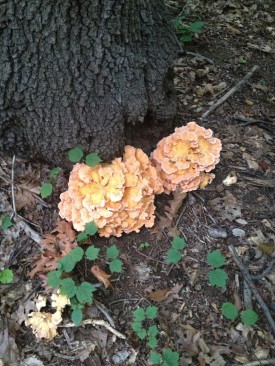The pollen season may be officially over, especially with the advent of the first frost in New York and Northern New Jersey and with temperatures approaching freezing point in parts of the northeast United States, but “mold spores are on the rise” and indoor allergens are becoming more of an issue, says Leonard Bielory, specialist in allergy and immunology with the Department of Environmental Sciences at the Rutgers School of Environmental and Biological Sciences and the Robert Wood Johnson University Hospital. He urges residents to get ahead of allergy symptoms before they strike as mold spore counts are expected to be higher than average and we hunt in closets for decorations for the upcoming holidays, dislodging dust, some of which contains mold.
“When mold spores deposit on the eyes and nose in patients with allergies, a specific portion of their immune system kicks in,” says Bielory. This generates the release of various chemicals such as histamine that cause tearing, sneezing, itchy red eyes, coughing, nasal congestion and sinus inflammation. Bielory, who is also studying the effects of climate change on allergic disease, has reported that there has been increasing trends of allergies from pollen and mold spores and that they will increase by 20-30% by the end of the decade in 2020.
There has been progress in treatments with more targeted therapies for ocular and nasal allergies and asthma. There’s even been progress in immunotherapy with research focusing on modulating the immune system. “It’s important to properly treat allergies so they do not take a toll on a person’s quality of life,” he adds.
While we can’t completely avoid allergies, Bielory says there are ways that residents can improve burdensome symptoms.
• Visit your doctor, even if you’ve never been officially diagnosed with seasonal allergies but notice your have itchy eyes and a runny nose over multiple seasons – even winter! Trying over-the-counter medications is one option, but if symptoms are not easily treated, you should consider visiting an allergist for further evaluation, which may include a skin test or blood test to determine the source of your allergies. Once that is known, a plan of action can be made to alleviate your symptoms.
• Plan for the outdoors – Pay attention to pollen and mold counts (www.NYNJPollen.com or the iTunes app iPollenCount), as well as air quality to avoid being outdoors when allergens are at their peak. For example, exercising later in the day when pollen counts are lower may lead to fewer symptoms.
• Protect your home – Regular dusting and vacuuming in your home and changing the air filters can help remove indoor allergens. Remove clothing that’s been worn outside when you get home since pollens are known to stick to fabric. Taking a shower to rinse allergens from the body can also help. If you’re a severe allergy sufferer and are having difficulty breathing, it’s best to keep windows and doors closed whenever possible during the high pollen months.
• Rinse your sinuses – Cleaning your nasal passages with saline is one of the best ways to help relieve sinus pressure associated with allergies. Bielory also has developed a nasal solution, Sinusol™, to help flush nasal passages and sinuses.
• Try over-the-counter medications – Patients should try over-the-counter medications as a first defense. Antihistamines reduce sneezing, sniffling and itching and decongestants may help with nasal congestion, but should not be taken if you have high blood pressure.
If the above tips do not offer relief, Bielory indicates prescription nasal sprays or allergy shots (“immunotherapy”) may also be an option.
“One needs to individualize treatment for allergies since what works for one person may not work for another,” said Bielory. “Don’t suffer in silence. Talk with your doctor so you can find a strategy that will work for you and allow you to enjoy the upcoming holiday “and mold” season.”



